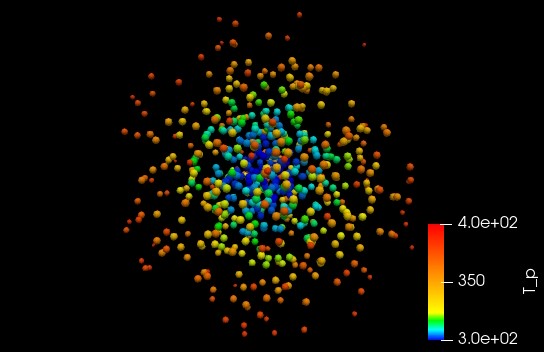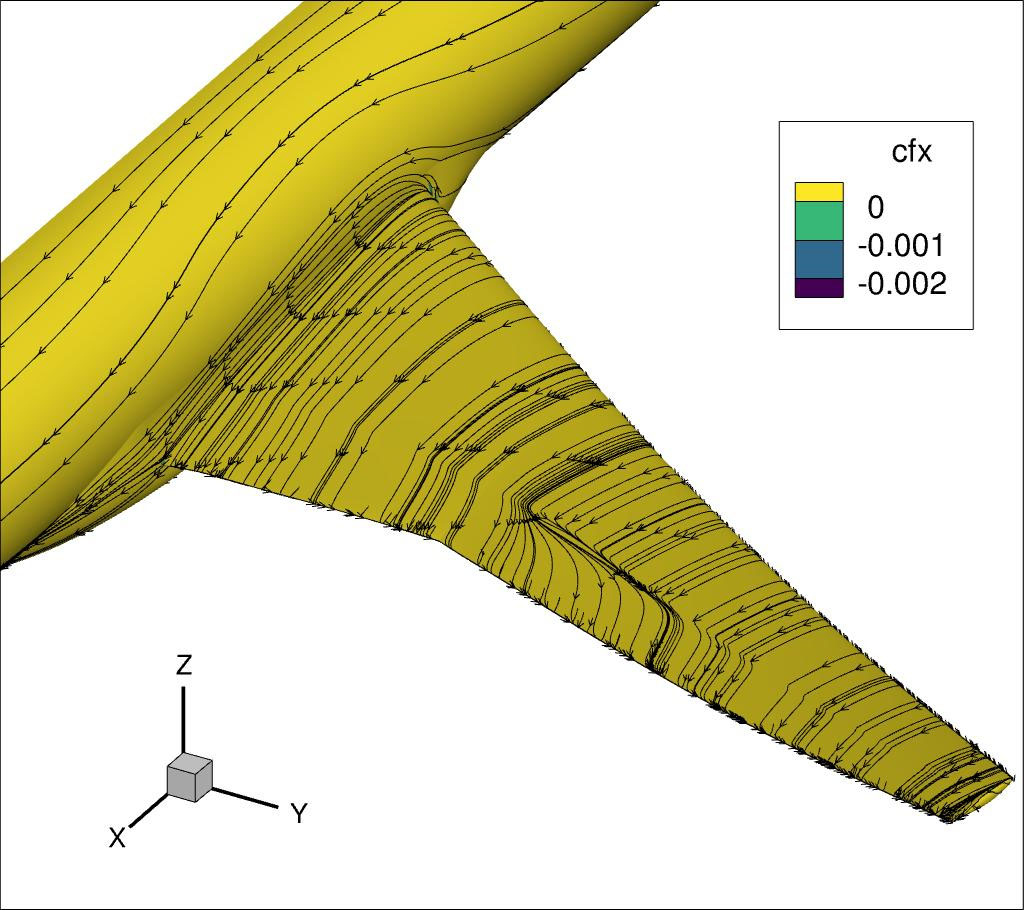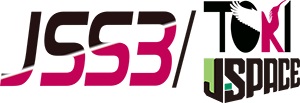Research on numerical simulation techniques for complex flows
JAXA Supercomputer System Annual Report February 2022-January 2023
Report Number: R22EDA201J02
Subject Category: Aeronautical Technology
- Responsible Representative: FUJII Kenji, Director, Aviation Technology Directrate, Fundamental Aeronautics Research Unit
- Contact Information: Abe Hiroyuki(abe.hiroyuki@jaxa.jp)
- Members: Hiroyuki Abe, Shingo Matsuyama, Yasuhiro Mizobuchi, Taisuke Nambu
Abstract
Fluid simulation in the aerospace field targets flow fields with turbulence and chemical reactions around aircraft and spacecraft. In addition, simulations of combustors for gas turbine engines and rocket engines sometimes have to deal with complex geometries. This study aims to establish numerical simulation techniques that can analyze such a wide variety of physical phenomena and complex geometries with high accuracy and efficiency.
Reference URL
N/A
Reasons and benefits of using JAXA Supercomputer System
Since turbulence analysis by Direct Numerical Simulation (DNS) and Large Eddy Simulation (LES) is the primary tool in this study, a three-dimensional unsteady analysis must be performed. In addition, governing equations for a large number of chemical species produced by chemical reactions must be solved in the analysis of combustion flows. The computational cost of such an analysis is so high that it is impossible without the use of a supercomputer.
Achievements of the Year
・The accuracy of the point-approximation analysis of fuel droplets used in the combustor analysis was checked using the large-scale detailed analysis of droplet evaporation conducted in FY2020 as the true value. The point-approximation analysis using the conventional method has errors in the evaporation time, and we propose improvements. As a result, we are able to predict the evaporation history close to the results of the detailed analysis.
・JAXA Fundamental Aeronautics Research Unit is developing the AMM model for predicting a wing-body juncture flow. We have performed a series of compurations for the DPW7 (7th AIAA CFD Drag Prediction Workshop) test cases at flight Reynolds number (M = 0.85, Re = 20M) to validate the AMM-QCRcorner model introduced into FaSTAR developed by JAXA. Figure 2 shows the prediction of the AMM-QCRcorner model for the skin friction coefficient together with the streamlines at the attack of angle of 3.0 degrees. It is shown that the behaviors in the region near the wing-body juncture and the mid-span of the wing are reproduced successfully by the AMM-QCRmodel.

Fig.1: Results of droplet group evaporation analysis by point-approximation (color represents droplet temperature)

Fig.2: Prediction of the AMM-QCRcorner model for the skin friction coefficient together with the streamlines at the attack of angle of 3.0 degrees.
Publications
– Oral Presentations
1) H. Abe, T. Nambu and Y Mizobuchi, “JAXA’s AMM model Results for the Seventh AIAA CFD Drag Prediction Workshop,” Seventh AIAA CFD Drag Prediction Workshop (DPW7) (June 25-26, 2022, Chicago).
Usage of JSS
Computational Information
- Process Parallelization Methods: MPI
- Thread Parallelization Methods: N/A
- Number of Processes: 128 – 512
- Elapsed Time per Case: 350 Hour(s)
JSS3 Resources Used
Fraction of Usage in Total Resources*1(%): 0.73
Details
Please refer to System Configuration of JSS3 for the system configuration and major specifications of JSS3.
| System Name | CPU Resources Used(Core x Hours) | Fraction of Usage*2(%) |
|---|---|---|
| TOKI-SORA | 19647944.87 | 0.86 |
| TOKI-ST | 28117.52 | 0.03 |
| TOKI-GP | 0.00 | 0.00 |
| TOKI-XM | 1248.44 | 0.78 |
| TOKI-LM | 678.70 | 0.05 |
| TOKI-TST | 0.00 | 0.00 |
| TOKI-TGP | 0.00 | 0.00 |
| TOKI-TLM | 0.00 | 0.00 |
| File System Name | Storage Assigned(GiB) | Fraction of Usage*2(%) |
|---|---|---|
| /home | 139.39 | 0.13 |
| /data and /data2 | 9526.86 | 0.07 |
| /ssd | 1061.43 | 0.15 |
| Archiver Name | Storage Used(TiB) | Fraction of Usage*2(%) |
|---|---|---|
| J-SPACE | 34.49 | 0.15 |
*1: Fraction of Usage in Total Resources: Weighted average of three resource types (Computing, File System, and Archiver).
*2: Fraction of Usage:Percentage of usage relative to each resource used in one year.
ISV Software Licenses Used
| ISV Software Licenses Used(Hours) | Fraction of Usage*2(%) | |
|---|---|---|
| ISV Software Licenses(Total) | 652.60 | 0.45 |
*2: Fraction of Usage:Percentage of usage relative to each resource used in one year.
JAXA Supercomputer System Annual Report February 2022-January 2023


